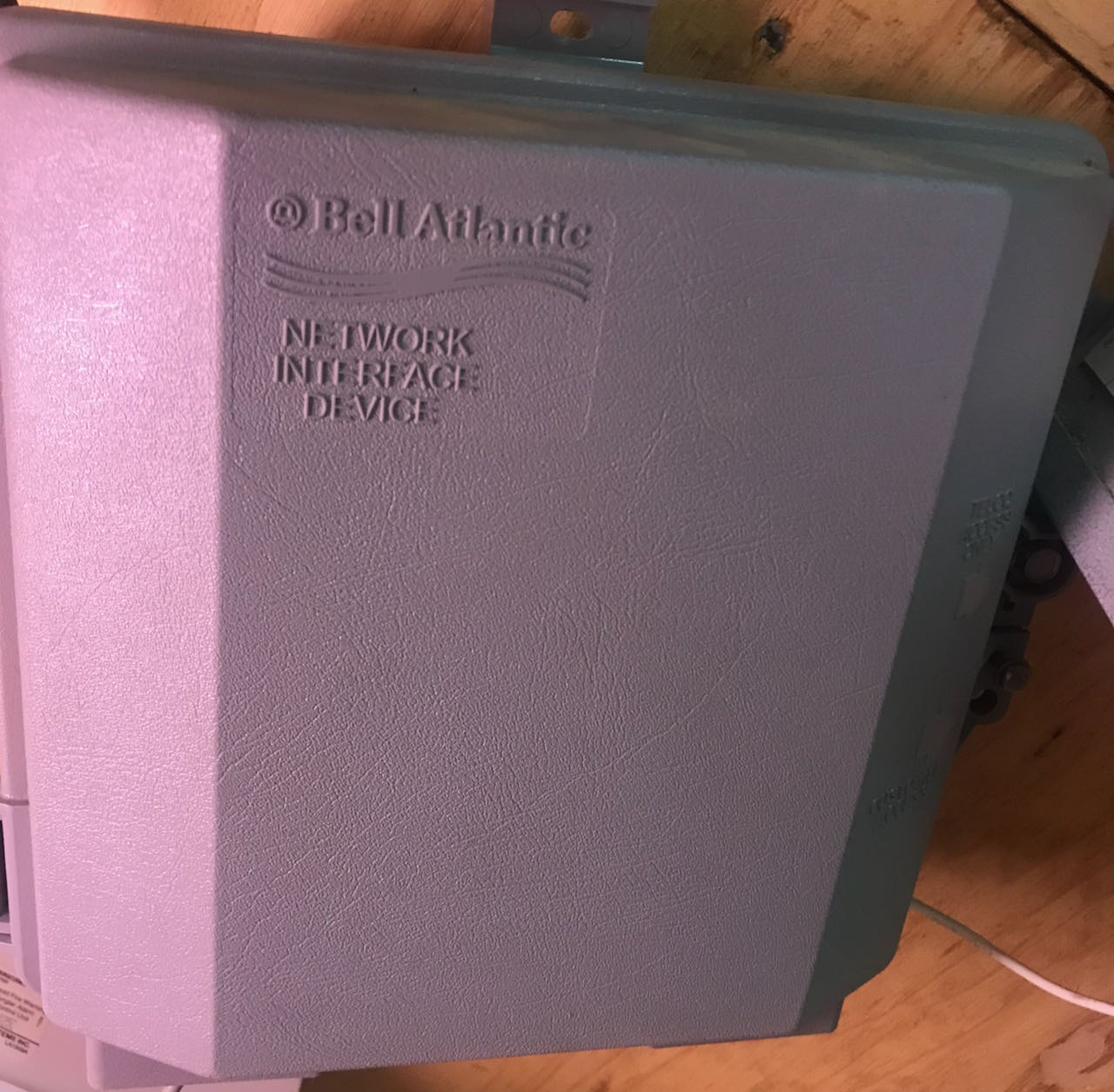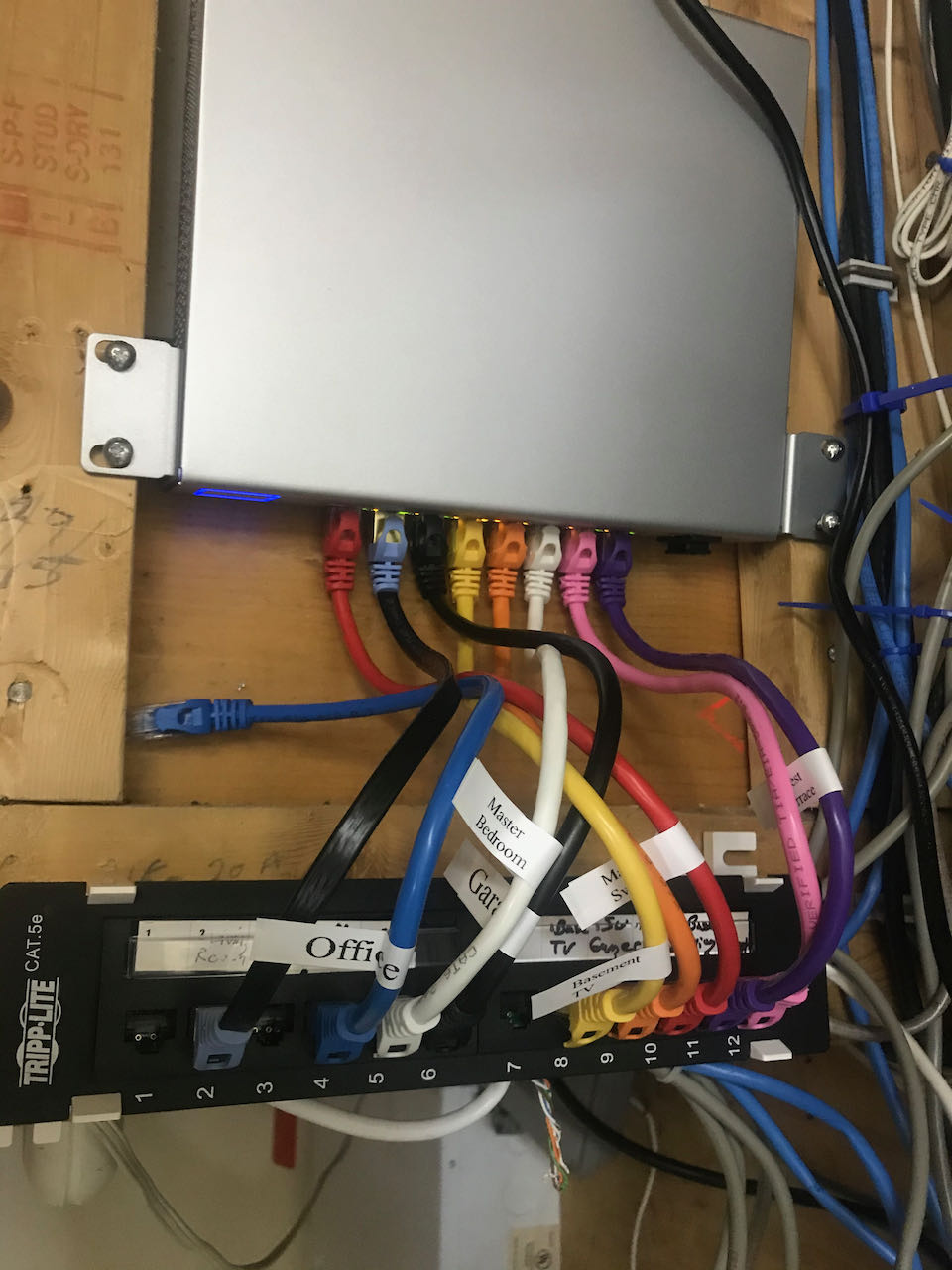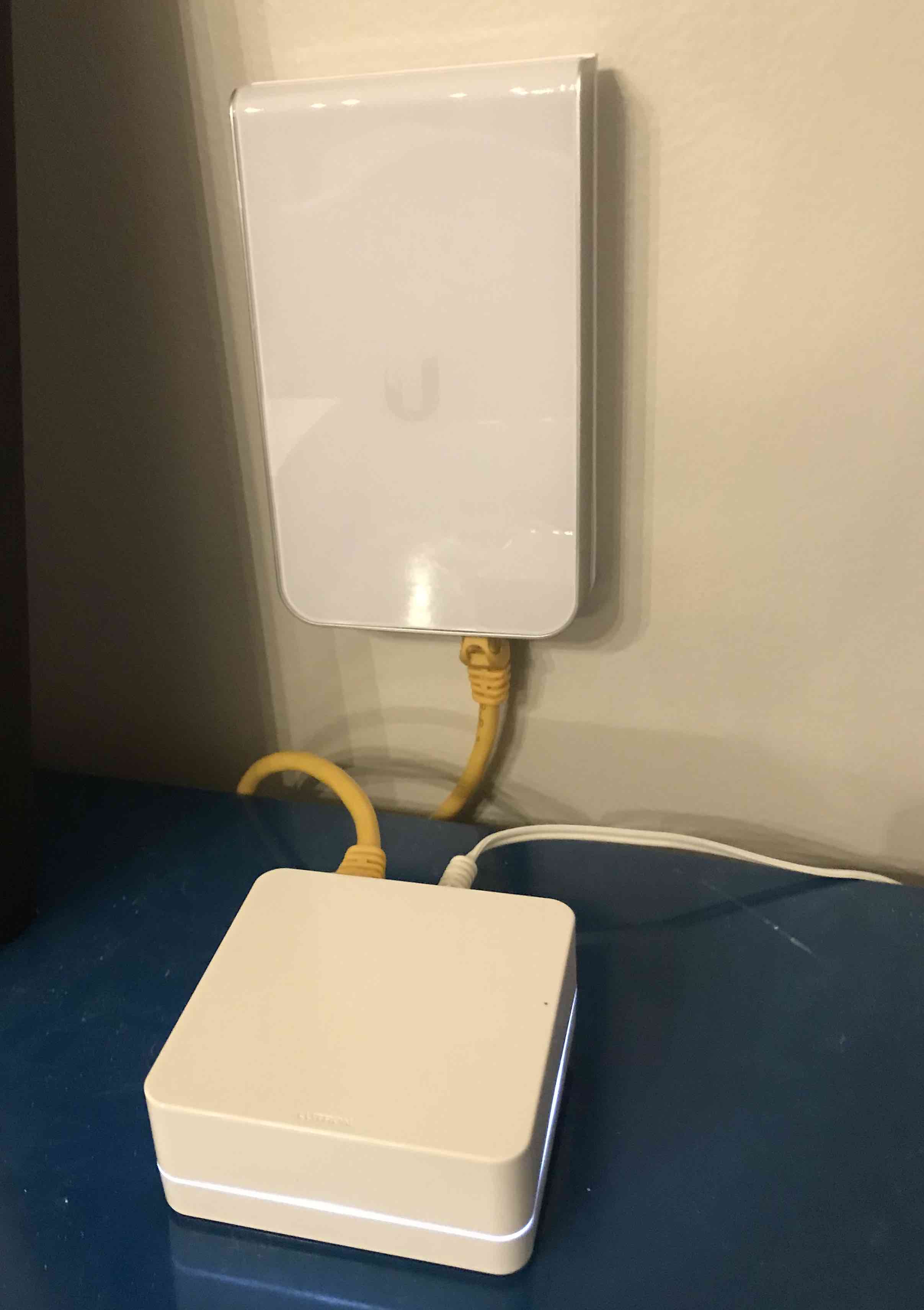I've recently moved into a year 2000 vintage house filled with such trendy tech as phone jacks and coax cable in most every room. Being me, I set to pulling Cat 7 Ethernet to every corner I could reach. But there were many corners I couldn't reach, and I despaired of getting the coverage I wanted.
Then I took notice of the one Ethernet jack in the house—in a basement media room, and that its cable ended up terminating in a grey box under the stairs.
 |
| Bell Atlantic Network Interface Device |
and there were many grey wires, printed with "Cat5," ending up at the same box. But where were they going, there were no more Ethernet jacks in the house. I'd searched. And then understanding came, I unscrewed all the phone jacks in the house. And with the exception of one, they were all wired to use a single pair out of a standard four pair Cat 5 Ethernet cable. 20 years back someone had seen the future and pre-stocked my house with the makings of fast wired networking.
Out went the phone jacks and in went Ethernet jacks or Ubiquiti in wall access points.
 |
| My Collection of Phone Ports |
At the other end, I neatly punched each cable and attached it to a managed Ubiquiti switch.
 |
| Repurposed Phone Lines |
Now you might think that Cat 5 would be slow, but for short lengths, in non-challenging environments it works fine without the shielding enhancements of later standards. My managed switch lists all but one as working at 1000 megabit full duplex, and the other one at 100 megabit full duplex. Even 100 megabit is adequate for streaming 4K iTunes video. I pulled Cat 7 in the attic because I never want to do it again, not because my current needs wouldn't be met by Cat 5e—or in a pinch by this existing Cat 5.
I found the ends of most of the cables near the Bell Atlantic box, but couldn't find the one to the kitchen, whose central location would make a great place for a WiFi access point. Then I came across a walkthrough video of my house pre-kitchen remodel, and right there was a long gone desk and on the desk was a phone and behind the phone was a phone jack. Ah ha.
 |
| Detective Work finding the lost Phone Line |
I cut a hole in that wall, and neatly stapled to a stud was the last lost Cat 5 in a perfect place for an access point, and a great central location for a Lutron smart switch hub. It would have been unacceptable wall butchery to get an Ethernet cable there through finished ceiling and walls, but 20 years ago somebody left me a present.
 |
| Ubiquiti in-wall access point + Lutron Caseta Hub |
I was able to wire all of the second floor with new cable via crawling the attic before it became inaccessible with a new layer of blown insulation. There had been two phone jacks in the second floor office, so I was able to join my new network into the Cat 5 legacy network. I will admit to a little overkill with the networking as Ubiquiti hardware is not cheap—what with the gateway, switches, and controller, but it was so easy to use Power over Ethernet (POE) in wall access points wherever I could get an Ethernet cable giving me a robust mesh network. If you have the means, I recommend the system.
This was also the first time I had used a punch down tool, and I'm proud of my professional looking network with the dedicated upstairs network closet with its rack of equipment and punched down cables.